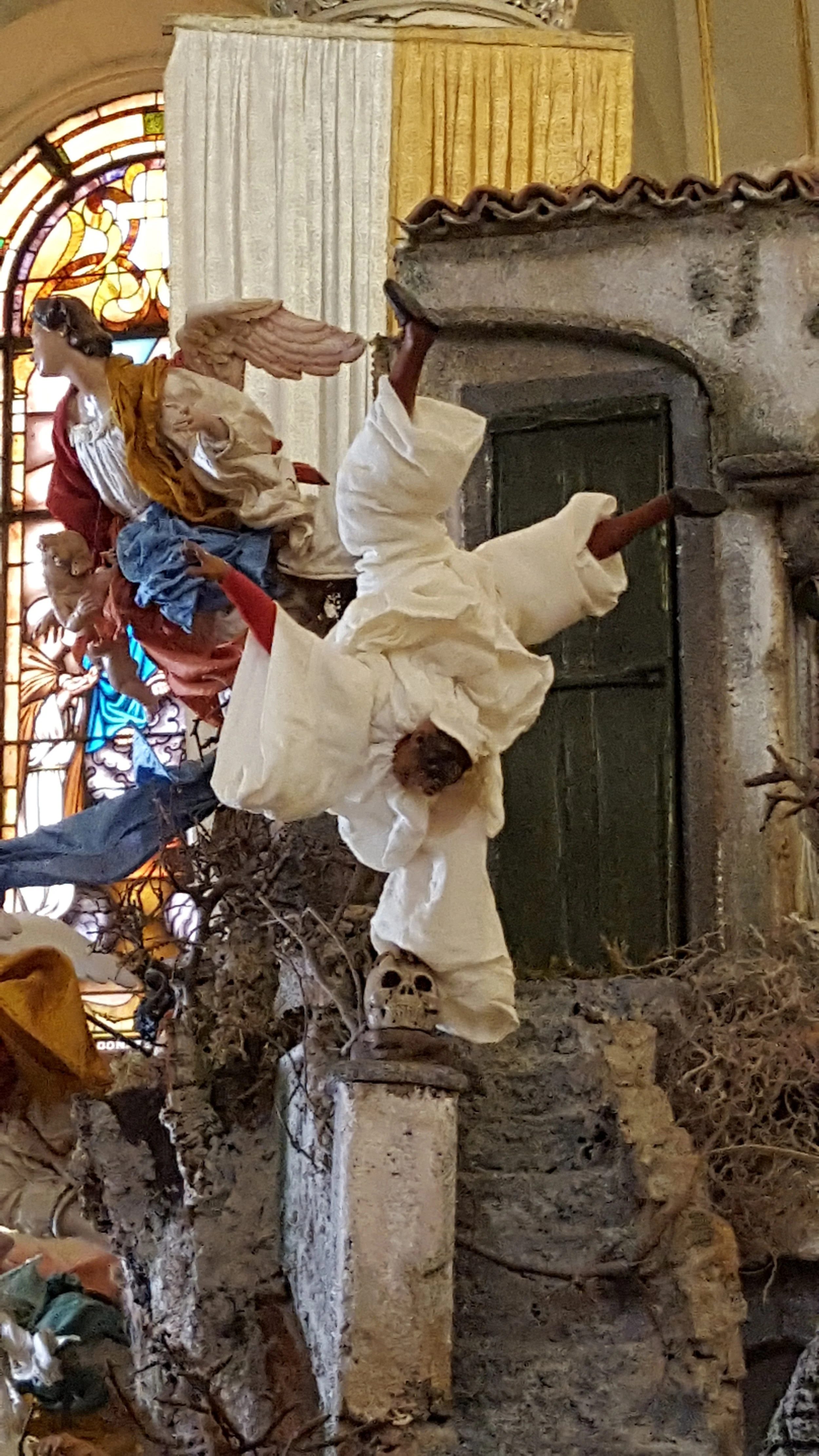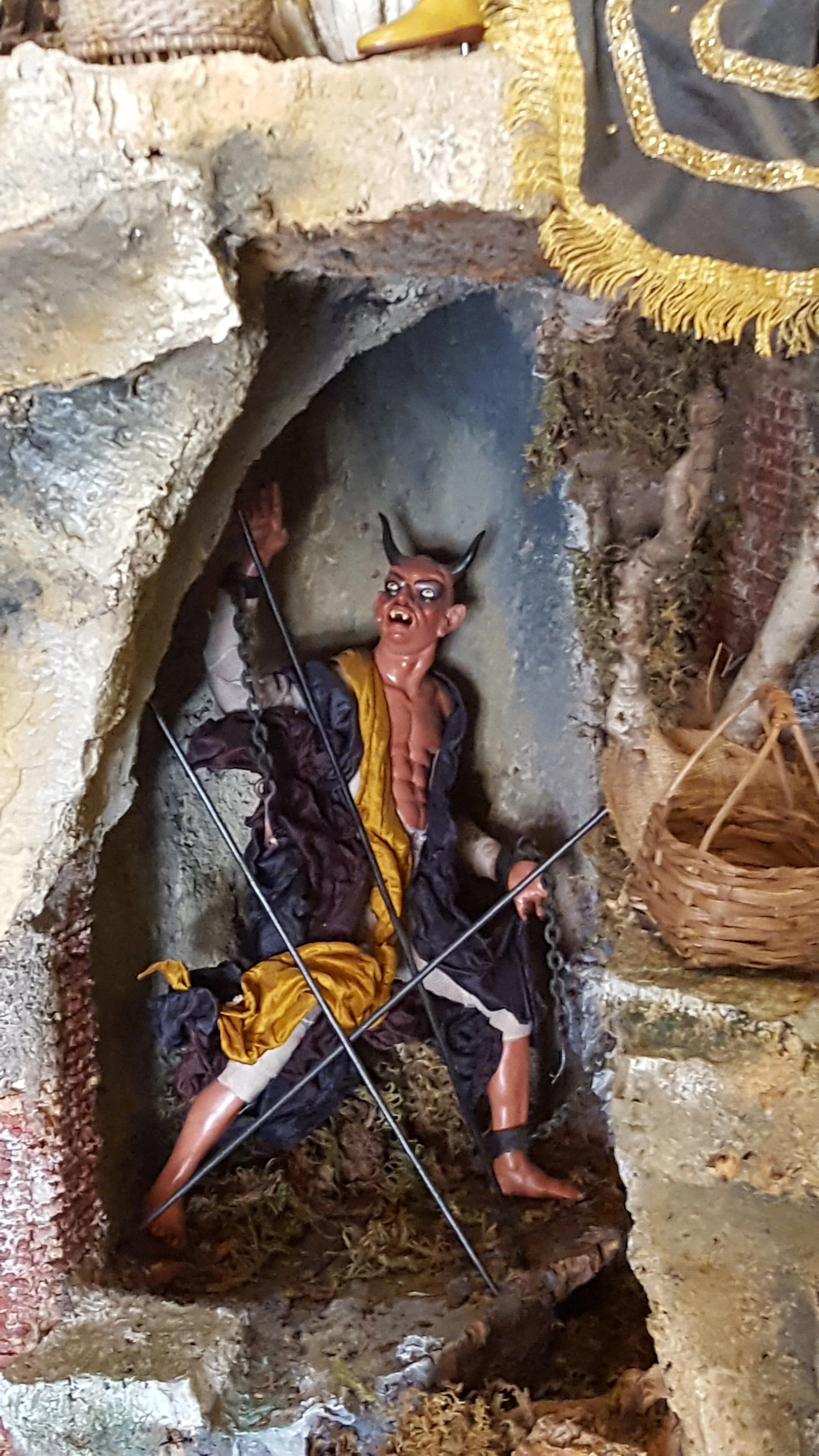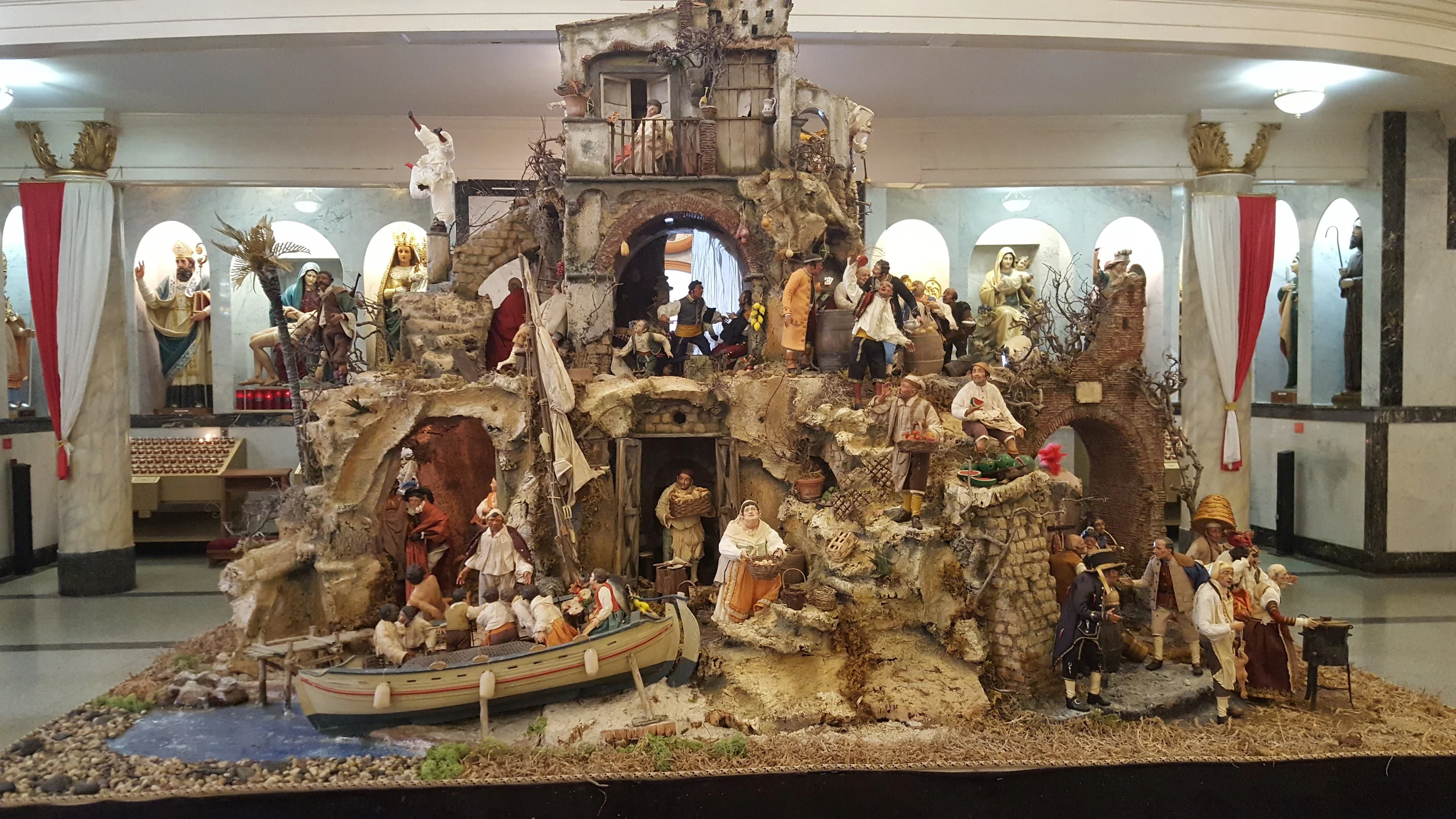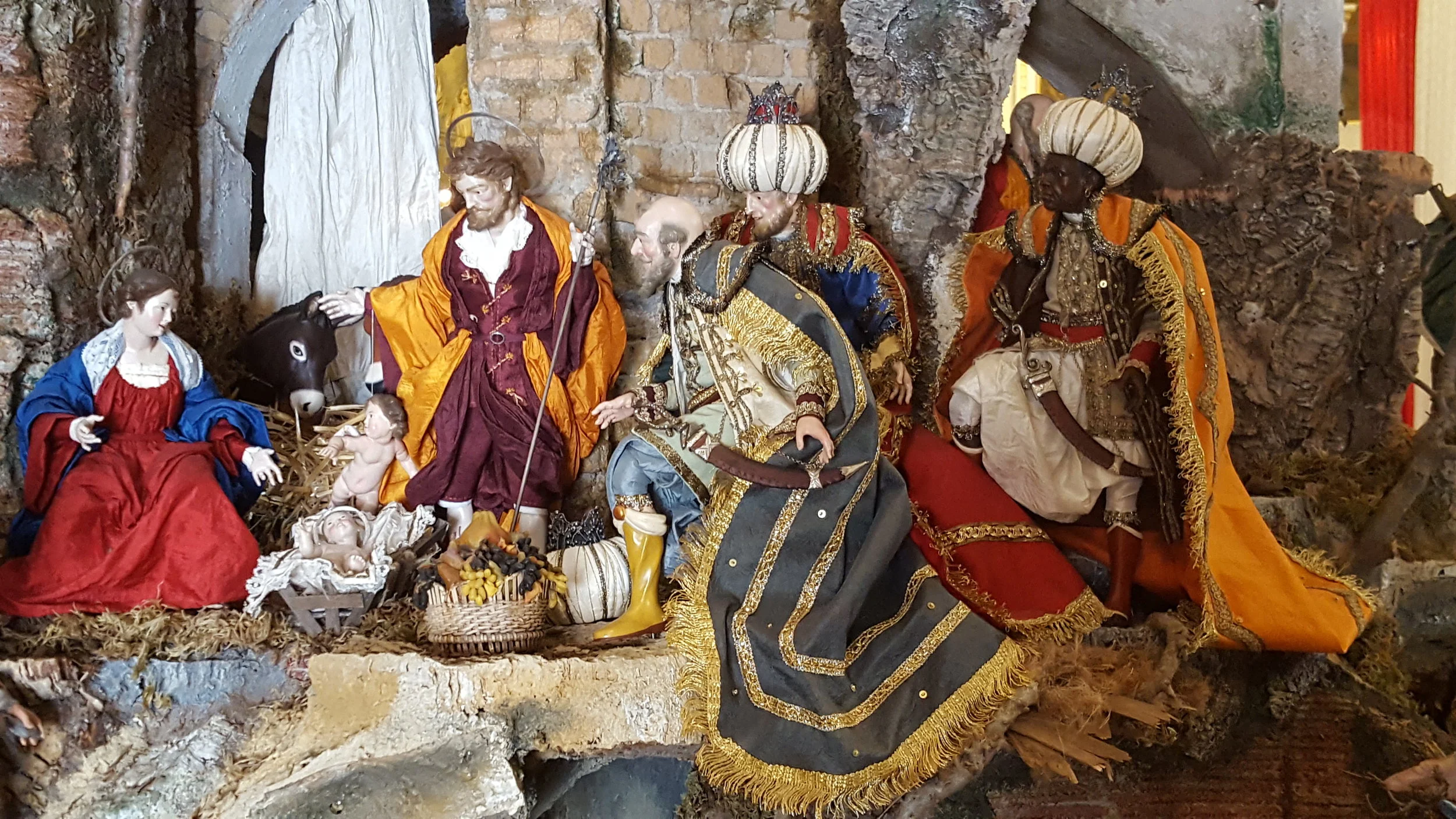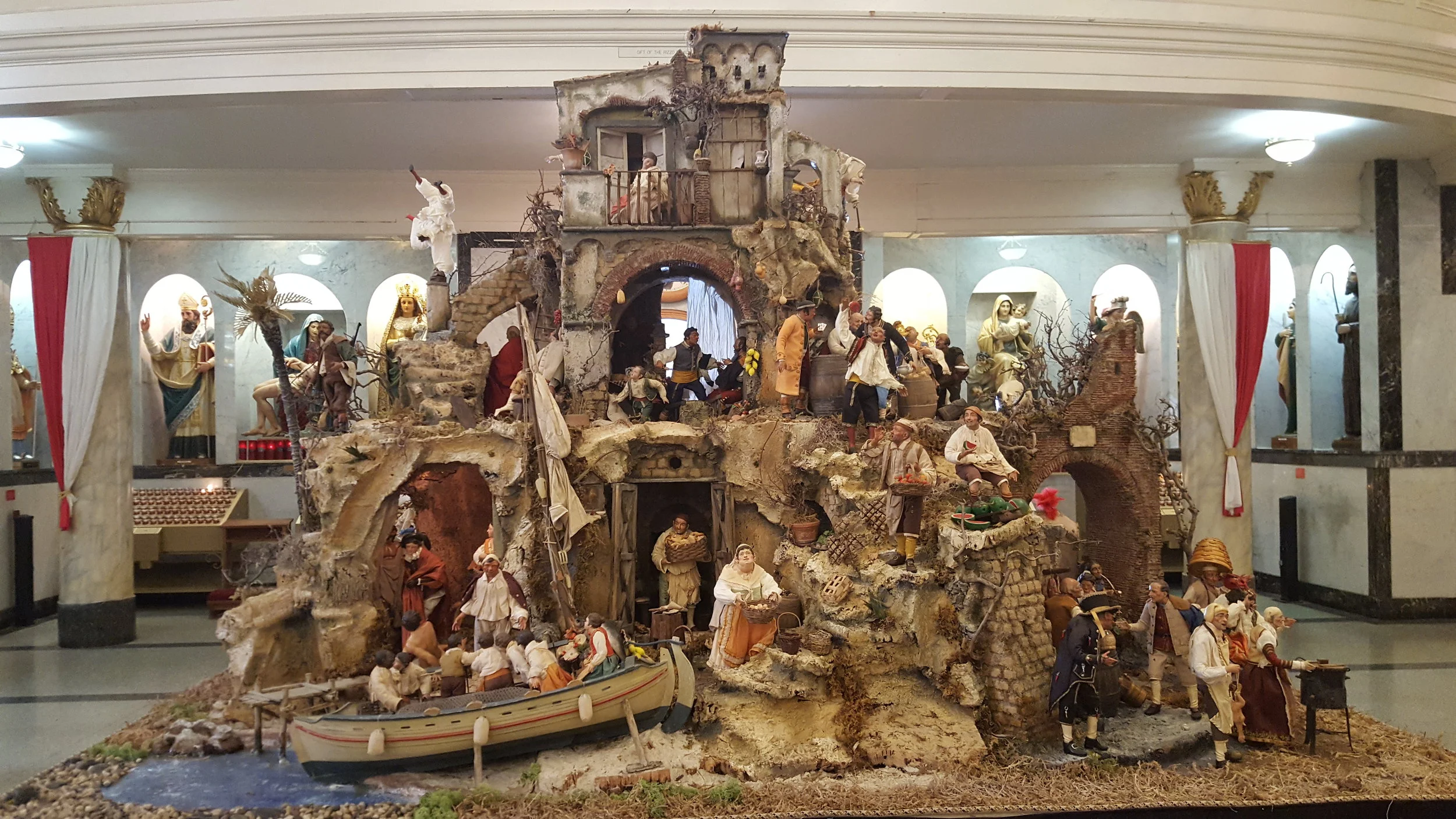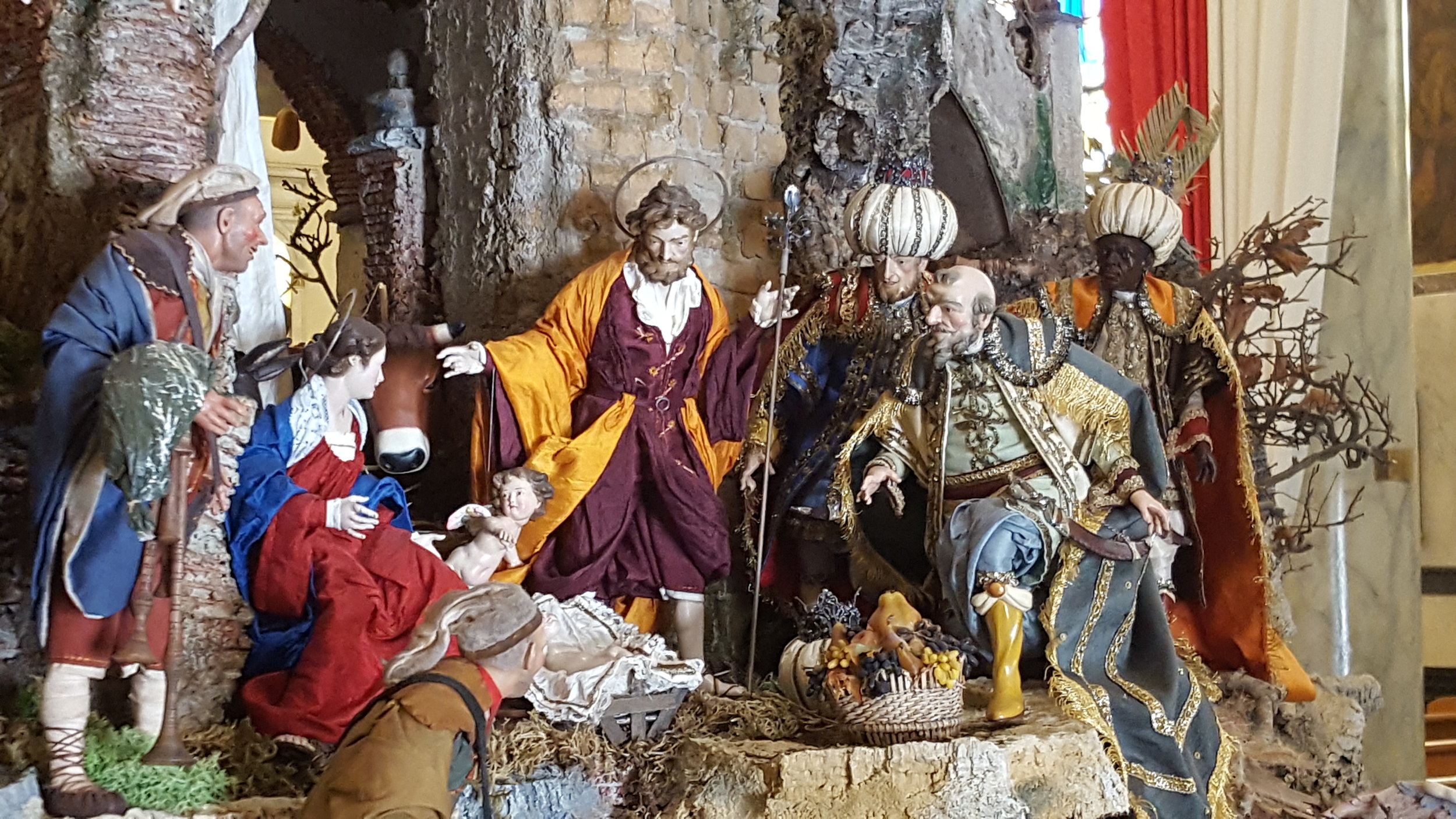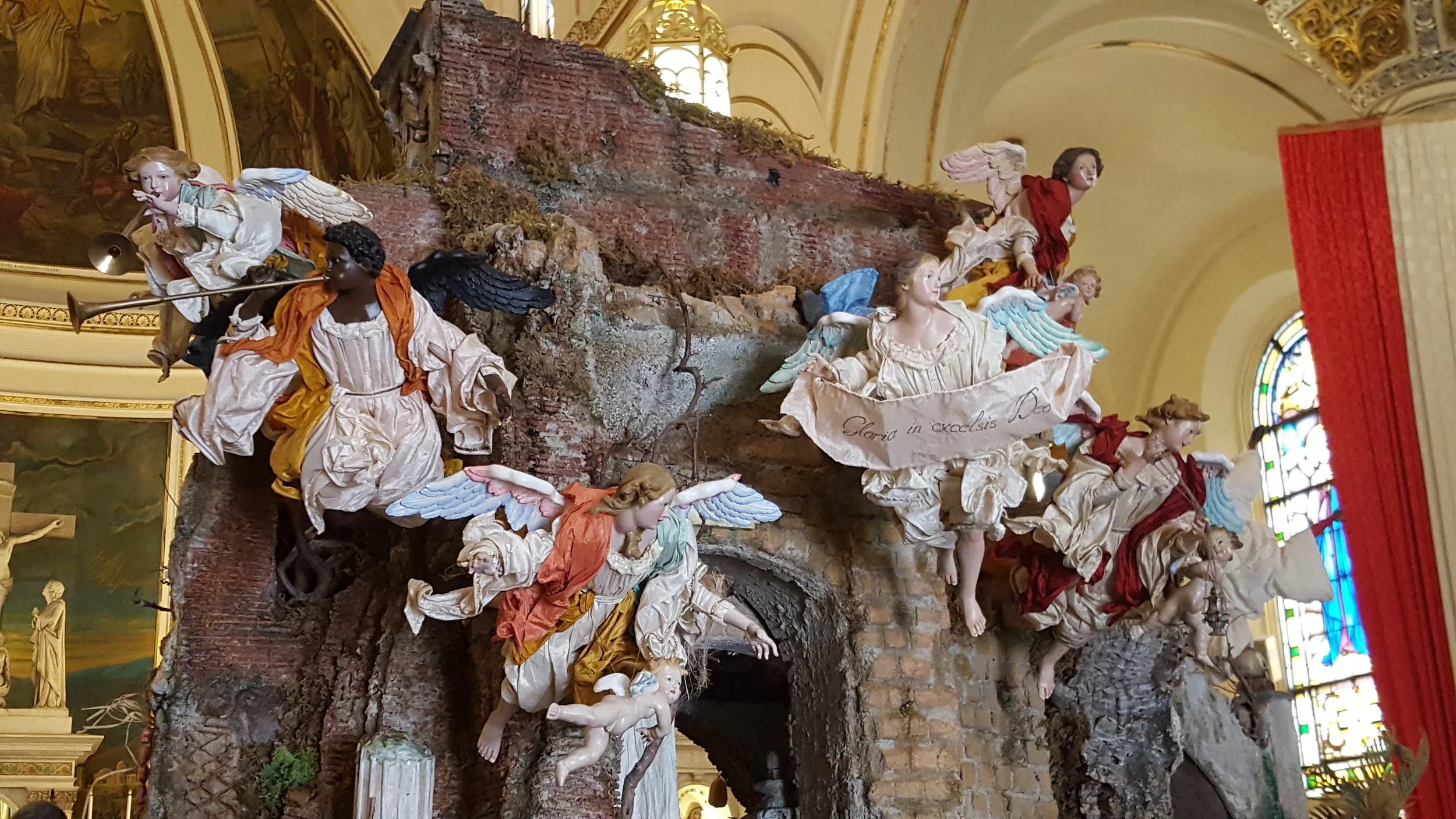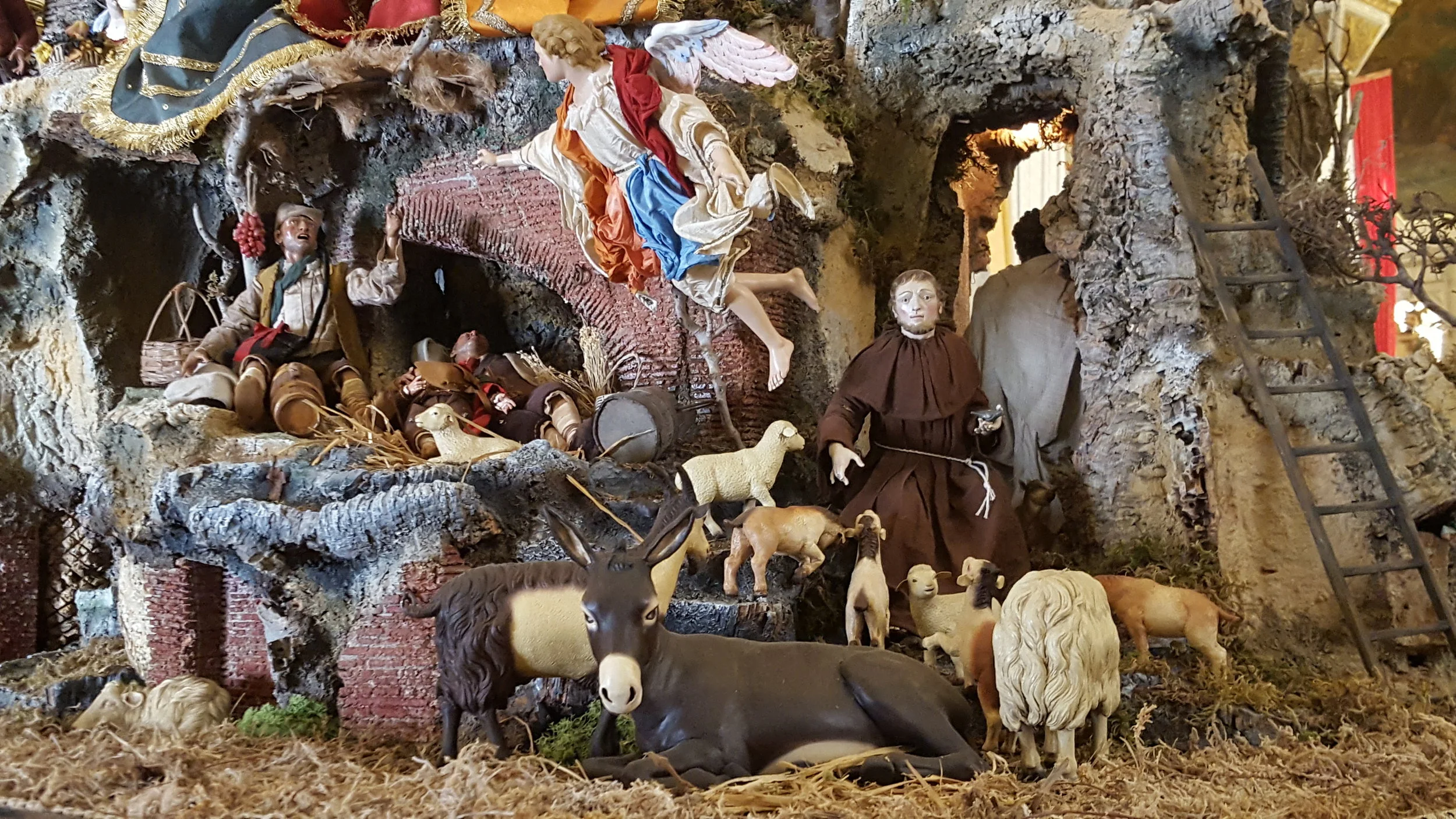The Presepio
No one does the presepio, or nativity scene, quite like the Neapolitans. The images above, taken last April at Most Precious Blood Church in Manhattan, demonstrate this. The traditional Neapolitan presepio has many characters, some would say up to 72, who were discussed in a previous blog post. Often, the modern presepio will incorporate political themes, or theme's from the spiritual life of the family that builds it: favored saints, etc.
A prayer to say before the presepio
The following prayer, posted by this lovely church website with plenty of information about Neapolitan folk Catholicism, can be said while standing before any nativity scene. It can be said by one person alone, or better yet, the different lines can be given to different members of the family as indicated.
What I love about this prayer is it demonstrates how material culture is used as a jumping off point for personal spirituality. Each element of the presepio inspires another line about the ways in which we hope to come closer to God.
English translation
All: Baby Jesus, our peace and reconciliation, have pity on us!
All: Lord Jesus, I come before your presepio with my heart full of trust and tenderness. I want to be like the shepherds who, in the middle of the night, woke up to come and see the Savior. Open my ears to hear the song of peace sung by the angels, and my eyes to see in you the Prince of Peace. May I recognize you as the Messiah in my life and bring me into your presence, as I see was done for your father and mother in this presepio. You come into the world to reconcile heaven and earth. Come reconcile me, as well, with the Father. I want to be with you for a little while in your cave: only those next to you will find peace and repose, my doubts become certainties, my troubles become stillness, my sadness becomes joy, my anxiety becomes serenity. In this space, my sorrow will find relief, I will take courage to overcome fear, I will refill myself with generosity in order not to give in to degradation and to resume the journey of hope.
Mother: Mary, I see in your face similarity to Jesus. You gave birth to the One who is our reconciliation. Mother, I take refuge in you and under your protection I implore God’s forgiveness. Make me like Him, to be Mercy like him.
Father: Saint Joseph, teach me to protect the presence of God within me as you have protected Baby Jesus and your wife Mary. Help me, along with the help of the Holy Angels, to recognize the devious attacks of those who would kill in me the living presence of the Lord that the Father has wanted for me since the day of my Baptism. May I, after the visit to this presepio, guard Jesus and Mary with the same love that I can admire in your eyes.
Children: Holy Angels of God, continue to be as today the voice of God that calls me, inviting me to rise up out of the darkness in which I fall because of my weaknesses and sin.
All: Glory to God! Alleluia! Amen!
Italian original
Tutti: Bambino Gesù nostra pace e riconciliazione abbi pietà di noi!
Tutti: Signore, Gesù vengo davanti al tuo presepio con il cuore pieno di fiducia e di tenerezza. Voglio essere come i pastori che nel cuore della notte si sono alzati per andare a vedere il Salvatore.
Apri anche le mie orecchie per sentire il canto di pace degli angeli e i miei occhi per vedere in te il Principe della Pace. Che io ti riconosca come il Messia nella mia vita e mi metta alla tua presenza, come vedo fare al tuo papà e alla tua mamma in questo presepio.
Tu vieni nel mondo per riconciliare il cielo e la terra. Vieni a riconciliare anche me con il Padre.
Voglio stare un po’ con te nella tua grotta: solo qui accanto a te troverò pace e riposo, i miei dubbi si muteranno in certezze, i miei affanni in quiete, la mia tristezza in gioia, il mio turbamento in serenità. In questo spazio troverà sollievo il mio dolore, acquisterò coraggio per superare la paura, mi riempirò di generosità per non arrendermi all’avvilimento e per riprendere il cammino della speranza.
Mamma/Sposa: Maria, vedo nel tuo volto la somiglianza con Gesù. Tu dai alla luce Colui che è la nostra riconciliazione.
Madre, mi rifugio in te e sotto la tua protezione imploro il perdono di Dio. Rendimi somigliante a Lui, per essere come lui Misericordia
Papà/ Sposo: San Giuseppe, insegnami a proteggere la presenza di Dio in me come tu hai protetto Gesù Bambino e tua moglie Maria. Aiutami, con l’aiuto dei SS. Angeli, a riconoscere i subdoli attacchi di chi vorrebbe uccidere in me la presenza viva del Signore che il Padre ha voluto per me nel giorno del mio Battesimo. Che, dopo la visita a questo presepio, io guardi Gesù e Maria con lo stesso amore che posso ammirare nei tuoi occhi.
Figli: Angeli Santi di Dio continuate ad essere come oggi la voce di Dio che mi chiama, invitandomi ad alzarmi dal buio in cui cado a causa delle mie debolezze e del peccato.
Tutti: Gloria a Dio! Alleluia! Amen!

